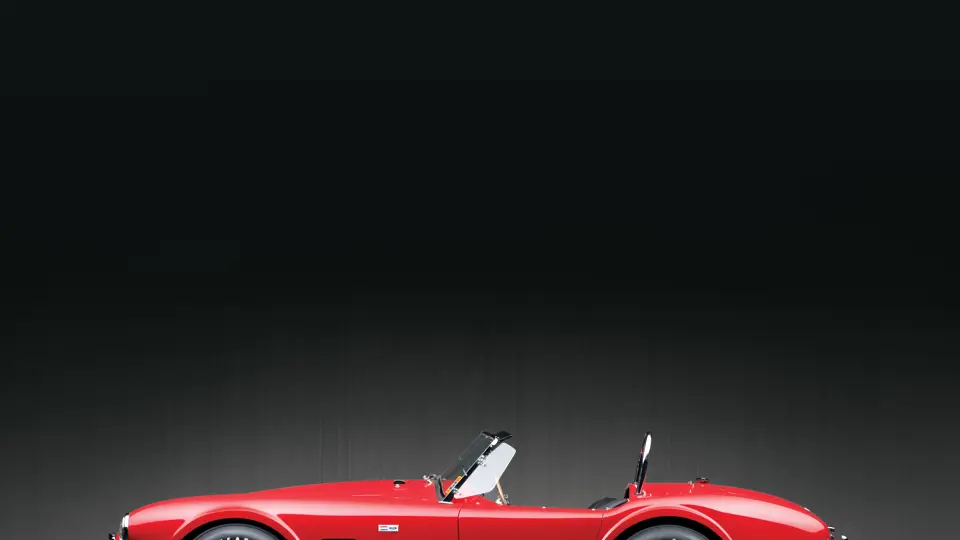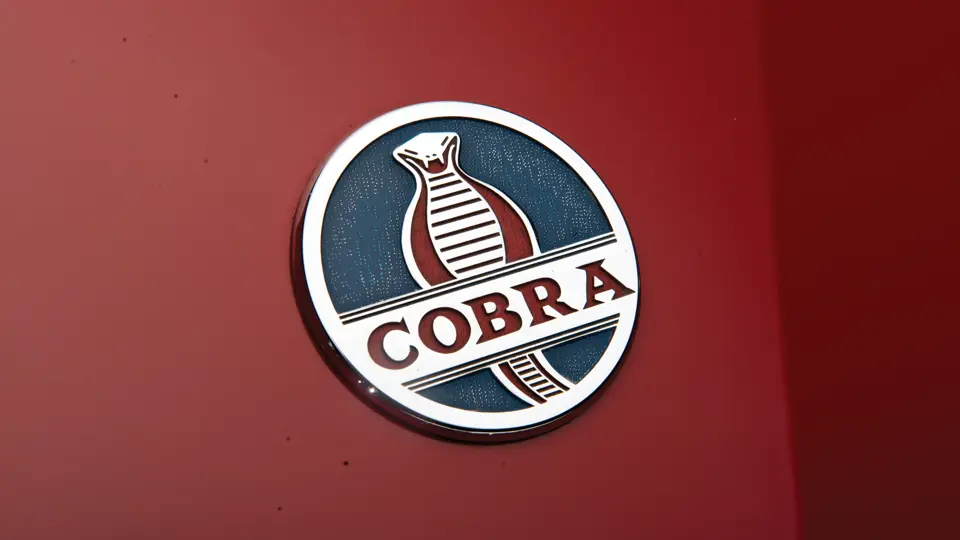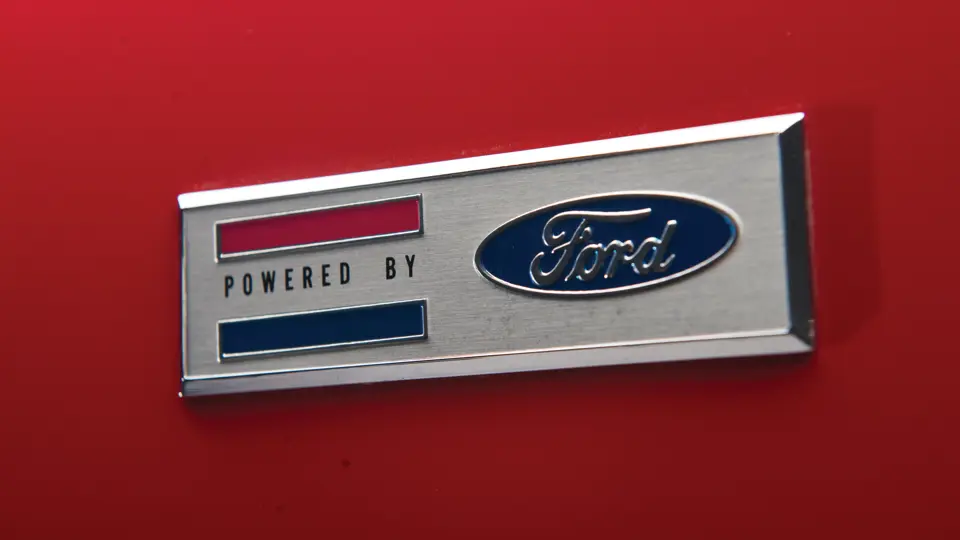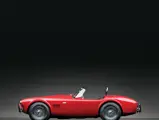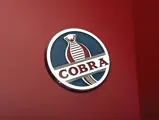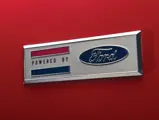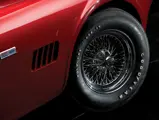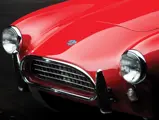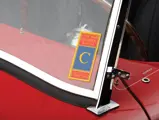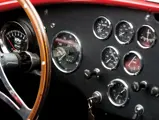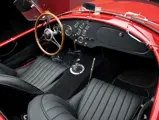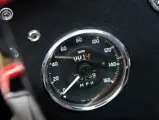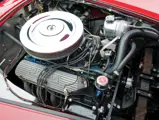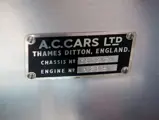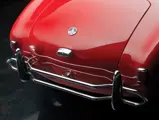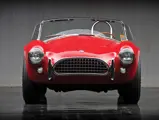271 bhp, 289 cu. in. OHV V-8 engine, four-barrel carburetor, four-speed transmission, ladder-type steel tubing chassis with independent front and rear suspension with A-arms, transverse leaf springs and tube shock absorbers, rack-and-pinion steering, and four-wheel hydraulic disc brakes. Wheelbase: 90 in.
The history of Anglo-American hybrid sports cars can be traced back to the original Ford V-8 of 1932, which provided bulletproof engines to power elegant two-seaters. Famous marques with this configuration between the wars included Jensen, Brough Superior, Railton, Batten, and a homebuilt V-8 Ford special that even won the 1936 Monte Carlo Rally.
But Carroll Shelby’s 1962 Cobra Roadster represents the pinnacle of the concept. It was a matter of perfect timing. Shelby, at 37, was winding up a very successful racing career, which had peaked in 1959, when he won the 24 Hours of Le Mans race for Aston Martin. Shelby became the Goodyear Racing tire distributor for the Western U.S. in 1961, and he started his own racing school at Riverside Raceway in California. All he needed was a car bearing his name.
As the new cars were completed in Shelby’s California factory, many headed straight to the race track. The first 75 cars were powered by the 260-cubic inch motor, which then gave way to the 289-cubic inch Windsor V-8. In race prep, this could generate up to 370 horsepower in a car that weighed only 2,000 pounds—500 less than the Corvettes. The Cobras gave GM fits, starting with Dave MacDonald’s first victory at Riverside a year later on February 2, 1963. MacDonald smoked a field of Corvettes, Jaguars, Porsches, and Maseratis, and every hot-blooded sports car aficionado in the U.S. wanted a Shelby Cobra, like the example offered here.
According to the World Registry of Cobras & GT40s, CSX2121 was billed to Shelby American on May 20, 1963, and it was shipped to Los Angeles aboard the SS Dongedyk. On July 25, 1963, the car was invoiced to Harold Turner Inc., of Birmingham, Michigan, at a base cost of $5,195, plus options and freight, for a total of $5,699.50. The earliest owner of CSX2121 is E. Neill Babbs, of Miami, Florida, who advertised it for sale in mid-1970, with 12,000 original miles. It was purchased by Walter Clay, also of Miami, in August that same year. Clay kept the car for approximately eight years. Subsequent owner Allen Woodall, of Georgia, advertised the car, having restored it at this point and advertising as such.
On February 10, 1987, CSX2121 was purchased by Kurt Carlson. According to documentation accompanying the car, Colonel Carlson had spent a number of years looking for an early, low-mileage example, and he finally settled on the purchase of this car. Colonel Carlson was the steward of this car for 24 years, and he looked after the car with a full desire to preserve as much originality as possible.
As presented today, showing 13,739 miles on the odometer, the car is finished in brilliant red, with fresh black upholstery in the cockpit. The car is wonderfully patinated throughout, due to the originality of items like the windshield, sun visors, front badge, and even smaller items like the hood and trunk latches, with their partial chassis number stampings reading “121.” Ancillary items in the engine bay, such as the cylinder heads, intake manifold, carburetor, harmonic balancer, and washer bottle, appear correct as well. It comes further equipped with a chromed roll bar, chromed hood latches, a Rotunda tachometer and Smiths gauges, chromed 6-inch knock-off wire wheels shod with Goodyear Polyglas tires, as well as a full spare, a dash-mounted rearview mirror, chromed nerf bars with bumper overriders in the front and rear, and a quick-fill fuel cap. Nicely presented, this 289 Cobra can be carefully enjoyed while also preserving its integrity as a low-mileage example.




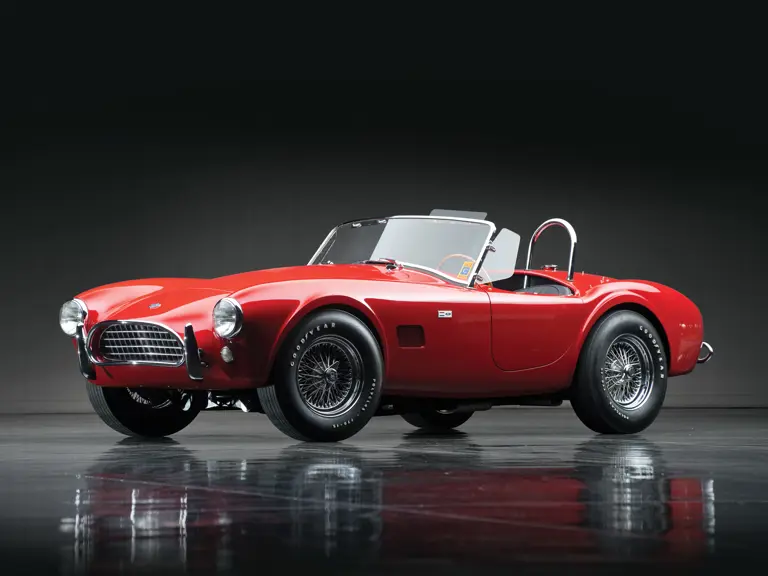
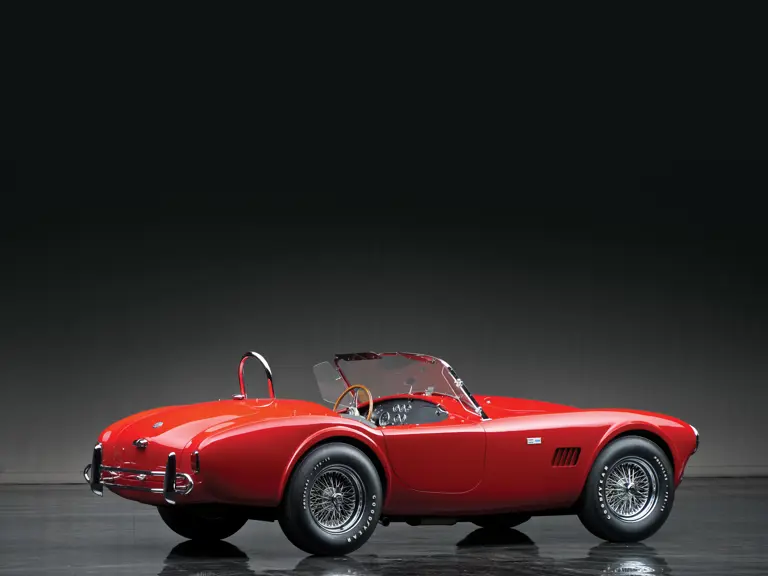

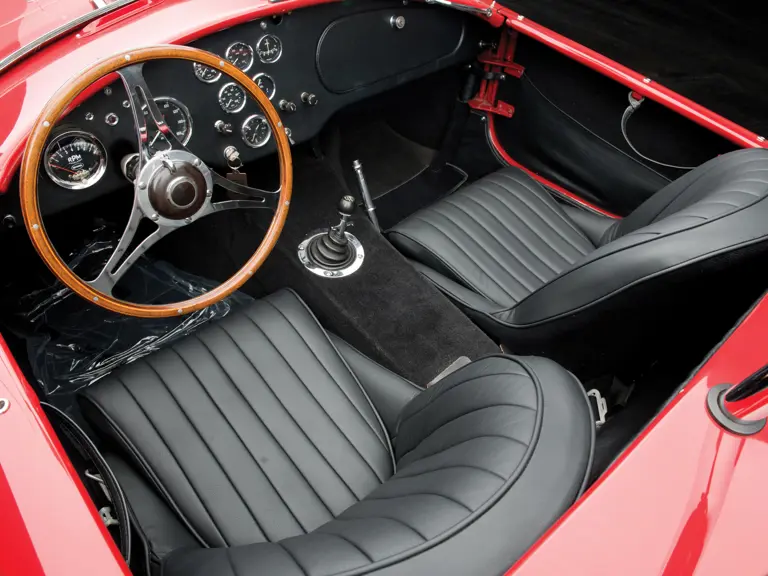
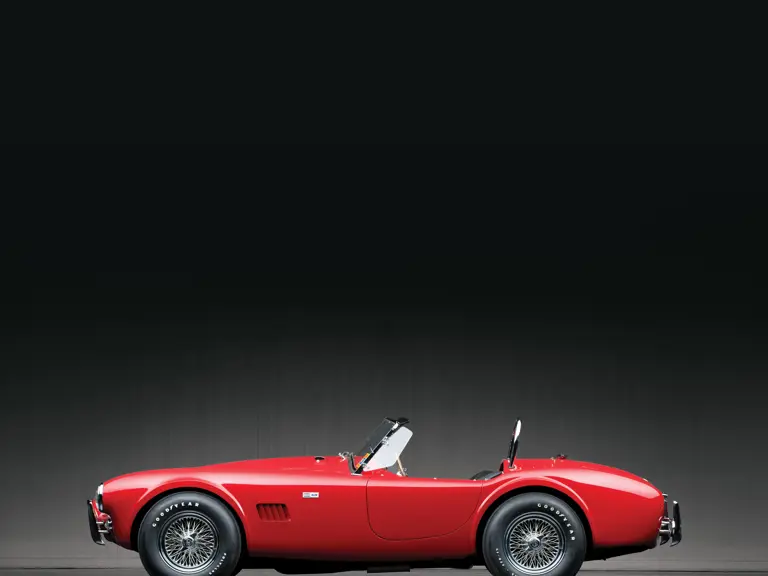
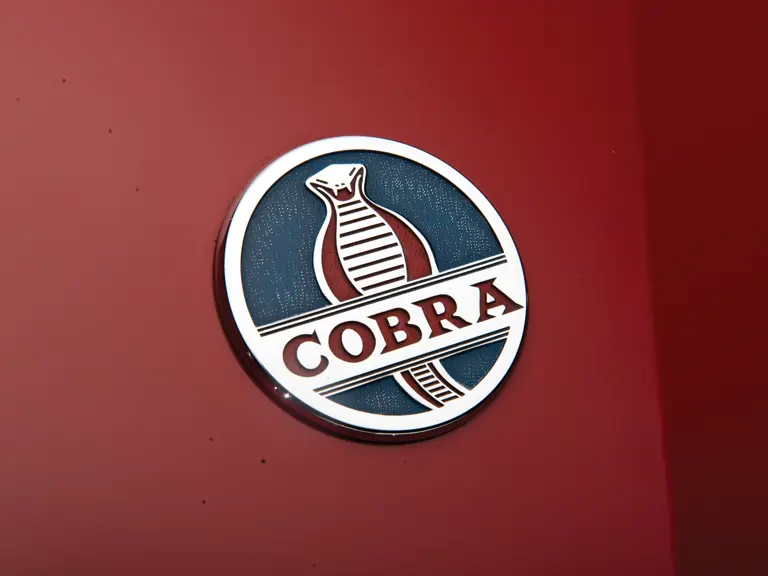
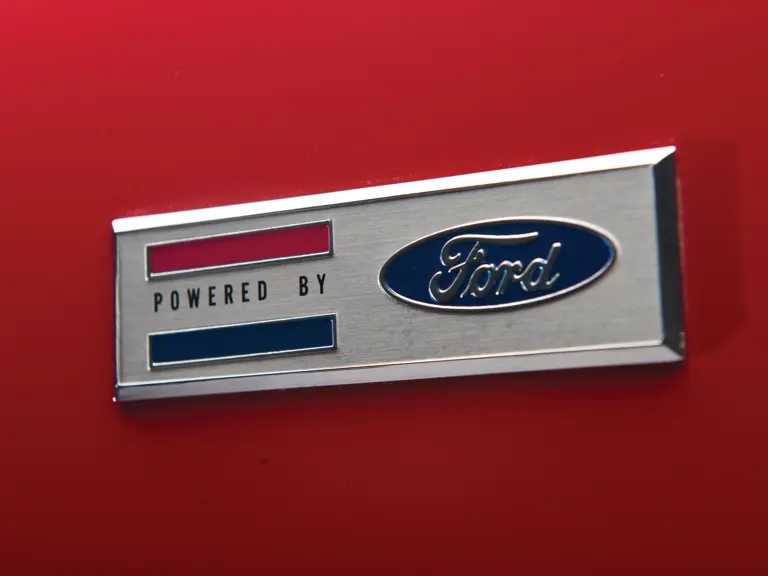
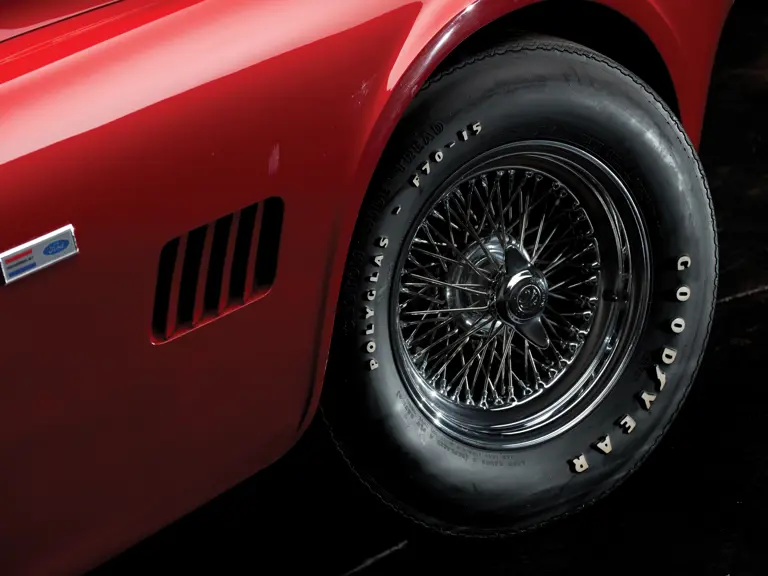
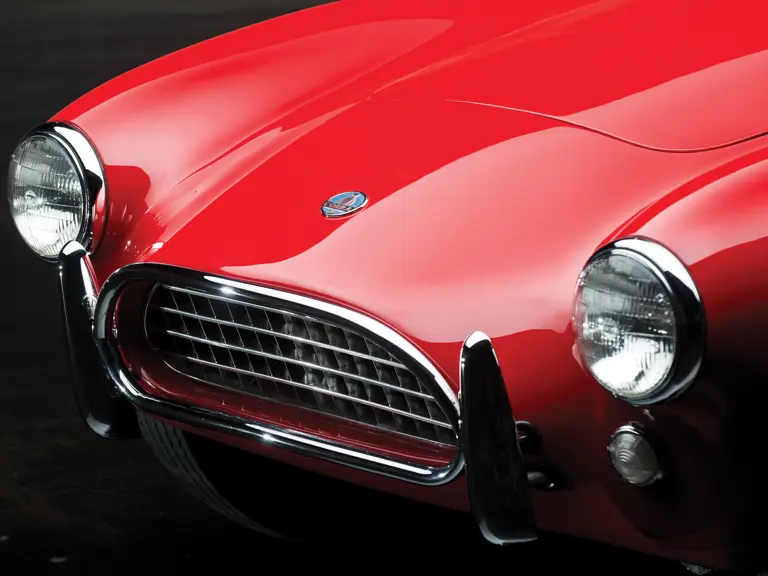
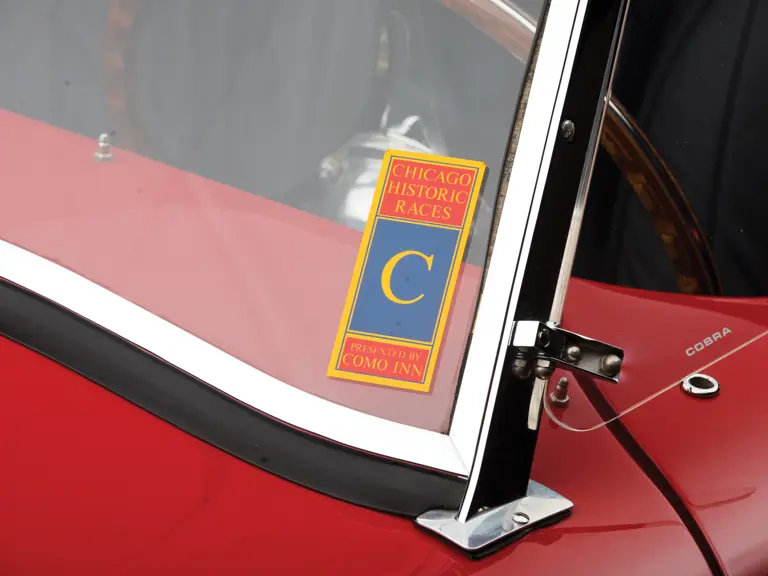
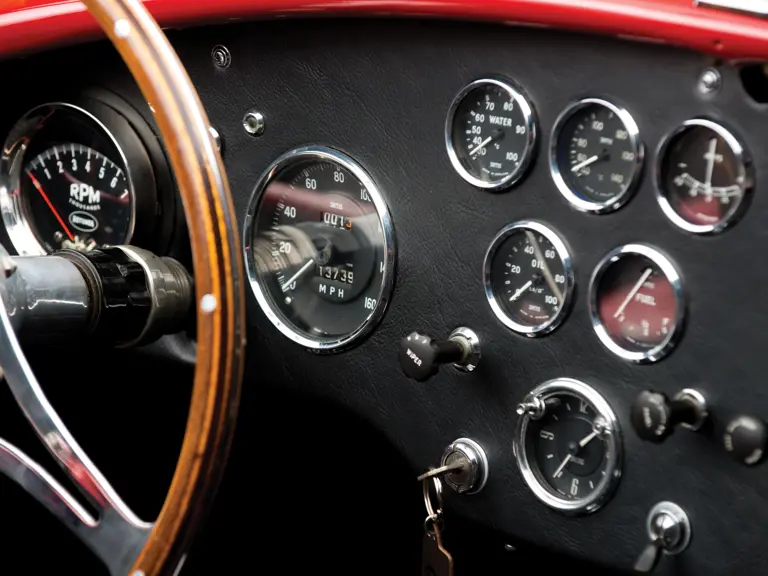

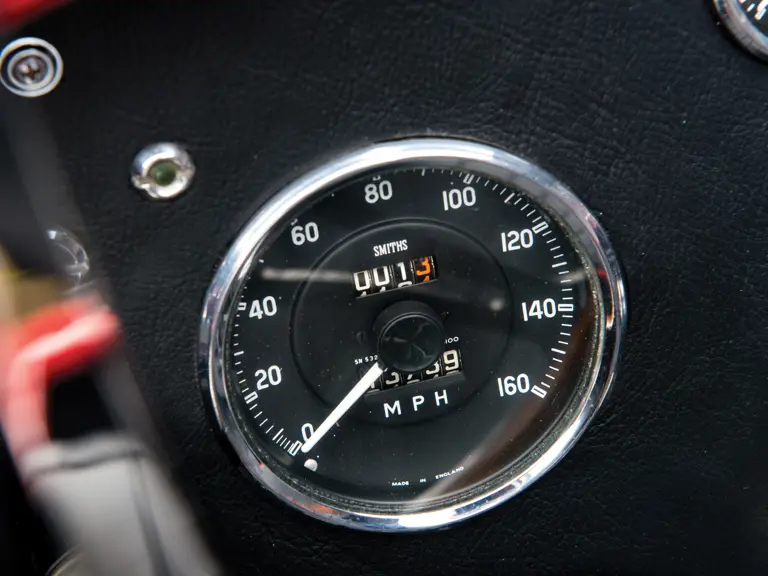

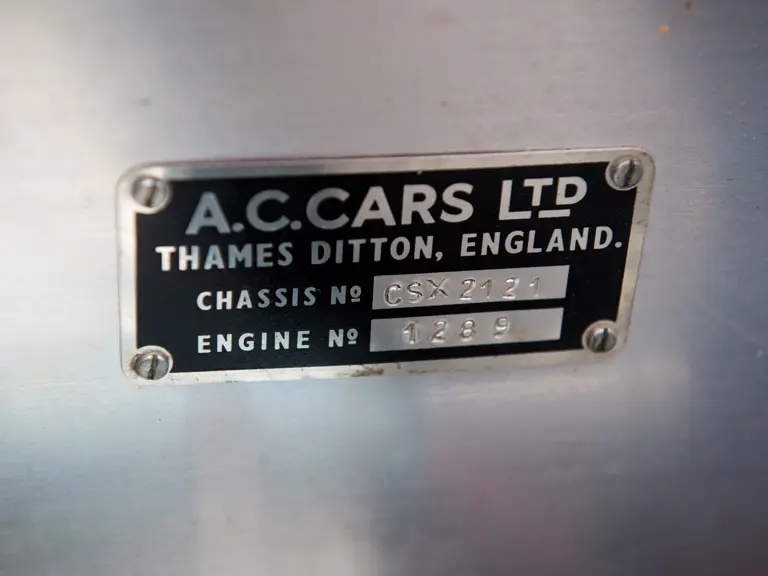
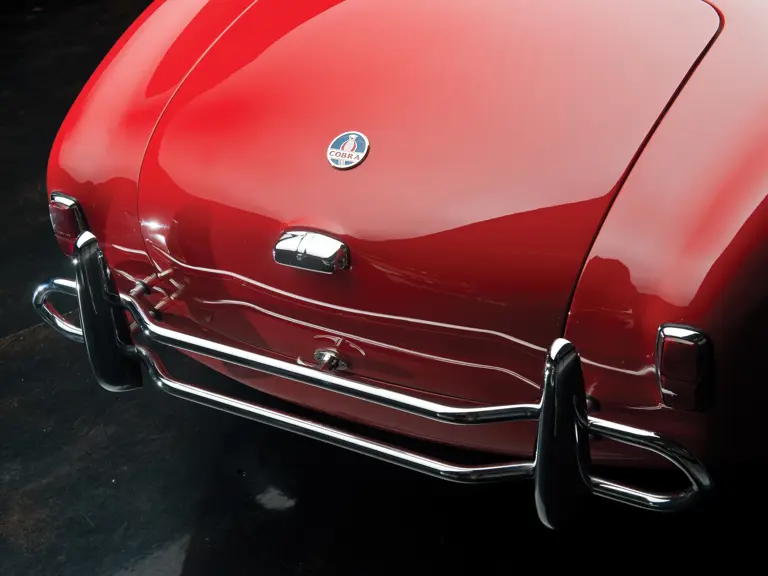
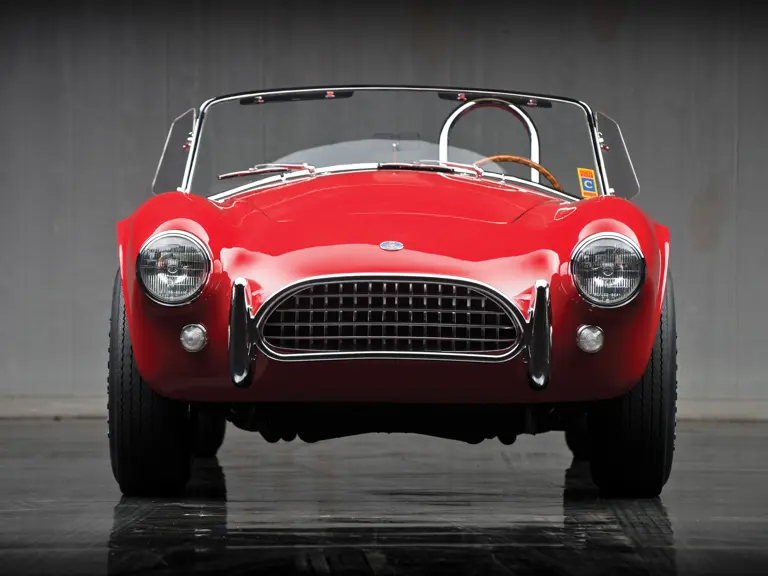
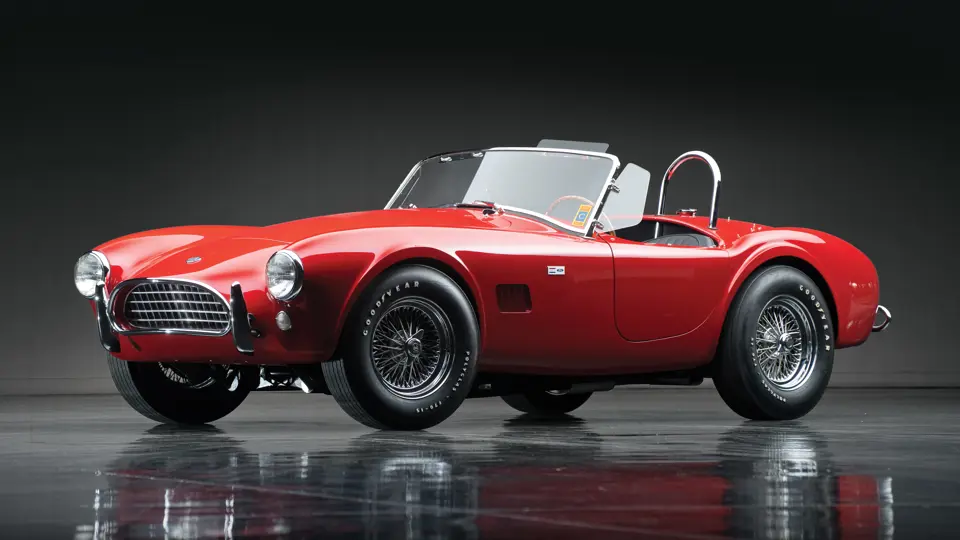
 | Fort Worth, Texas
| Fort Worth, Texas
